#cernunnos thoughts
Text
Hello there!
So I'm still alive! Happy New Year! Currently I am still writing trans!reader content (right now I'm working on chapter 3 of Living with Toman) and there might be some Trigun content coming down the pipeline
Super excited for what I've got coming in 2024
5 notes
·
View notes
Text
Ok now onto the second main character in the Primwood and Eowyn's love interest!
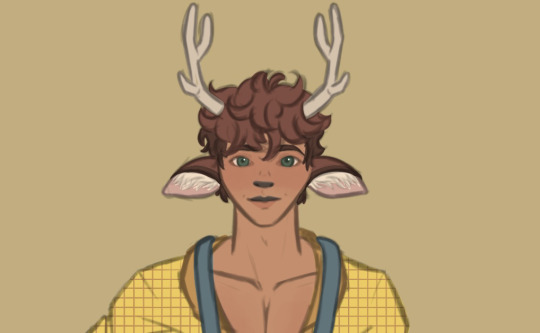


Here's Findley Oisin (finnd-lee uh-sheen)!He's a cerunnia (ker-roo-nee-uh), one of the races I made up that's part deer part human inspired by the Celtic god, Cernunnos. Findley's very much a himbo with few thoughts in his head and very much whimsy and joy in his heart. He works on his family's farm up in the outskirts of the northern town of Dyrehirst. He'll run errands which often brings him down to Primsbrough.
Pronouns: he/him
Age: 20
Birthday: October 5th
Again, I'd love to hear any questions about him that anyone has!!
#he's my favorite out of the main 3 tbh#so silly#so little thoughts#art#oc#original character#himbo#deer boy#cernunnos#celtic mythology#celtic myth#fantasy#high fantasy#faun#cervitaur#findley oisin#the primwood#novaposting
2 notes
·
View notes
Text
A Dream About Cernunnos
While I was taking a nap this afternoon, I had a dream about Cernunnos.
In the dream, I was standing in a forest. Cernunnos was standing in front of me. Cernunnos looked at me and said, “Follow the path of nature when you are ready, young one. It’s been waiting for you.”
I can’t help but wonder what Cernunnos meant when he said that the path of nature has been waiting for me.
3 notes
·
View notes
Photo
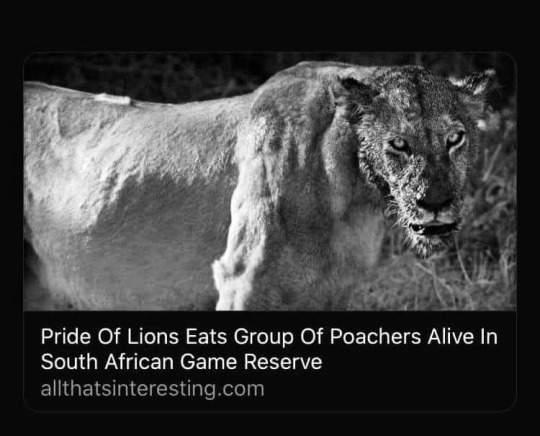
2 notes
·
View notes
Text
part of my mind is stuck in the sort of atheistic nihilism that i was trapped in when my magic wasn’t working for me the way i thought it should and thinking like. why would the gods love you, if they exist why would one follower matter over another
but the rest of me, now that i’ve found a practice that works, is like. no yeah of COURSE they love you. some may not yeah alright that’s fine but they wouldn’t still be here and making that contact if they didn’t.
#i used to have this thing where i was jealous of people who truly believed in their religious beliefs#bc i could never find anything that made sense to me or felt right#i couldnt have Faith in anything and it drove me FUCKING CRAZY#bc i was like. i BELIEVE theres more. but i just dont believe In Anything#but now that i've found the right path it all clicks and i need to let go#especially with cernunnos. i have found such comfort in this bitch i love him lol#maybe i'll ramble about my experiences with the greek pantheon later....... and why i generally do not interact with Anything over there now#tl;dr it's because all the info i could find ONLY talked about them and when i didn't connect with those gods i thought i had been Abandoned#or that i was doing all of my magic shit wrong#but now that i got my main guy. we are all golden. i love him he loves me lets fuckin GOOOOOOOO
0 notes
Text

Samhain Altar Ideas & Correspondences
Samhain is the Celtic festival that marks the end of the harvest season and the thinning of the veil between the living and the spirit world. It's a time to honor your ancestors, connect with the spirit world, and plan ahead for months of darkness.
Altar Ideas
Altar Cloth: Choose dark, earthy colors like black, deep purple, or dark green to set the foundation for your altar.
Candles: Black or orange candles represent the energies of Samhain. You can also include white or silver candles for purification and connection to the spirit realm.
Seasonal Fruits: Apples, pomegranates, and grapes are commonly associated with Samhain and can be offered as symbols of the harvest.
Fallen Leaves: Gather fallen leaves, especially those with vibrant autumn colors, to represent the changing seasons and the cycle of life and death.
Acorns and Nuts: These symbolize the potential for new beginnings and growth and can be placed on your altar to honor the harvest.
Pumpkins and Gourds: Decorate your altar with small pumpkins and gourds, which are quintessential symbols of autumn and Samhain.
Ancestral Photos: Include photographs of deceased loved ones to honor and connect with your ancestors.
Ancestral Mementos: Heirlooms, jewelry, or items that belonged to your ancestors can serve as a link to their energy and presence.
Divination Tools: Samhain has historically been a time for divination to predict the upcoming year. Tarot cards, runes, a crystal ball, pendulum, or scrying mirror can be placed on your altar for Samhain divination and communication with the spirit world.
Crystals and Gemstones: Obsidian, onyx, amethyst, or garnet.
Broom (Besom): Place a besom on or near your altar to symbolize the act of sweeping away negativity and making room for positive energy and transformation.
Incense and Smudging Materials: frankincense, myrrh, or sage.
Offering Dishes: Use special dishes or bowls to hold offerings for your ancestors or spirit guides, such as food, drink, or tokens of appreciation.
Seasonal Flowers: Add fresh or dried flowers that are in bloom during the fall, like marigolds, chrysanthemums, asters, or dried lavender.
Personal Letters or Messages: Write letters or messages to your deceased loved ones, expressing your thoughts and feelings. Place these on your altar as a form of communication.
Symbols of Death and Rebirth: Skulls, bones, or representations of the God and Goddess in their transition from one phase to another.
Bells or Wind Chimes: These can be rung to invite and communicate with spirits, serving as a way to signal your intentions and presence.
Samhain Correspondences
Colors: Black, Orange, Red
Deities: The Morrigan, Hecate, Persephone, Cernunnos
Herbs: Mugwort, Cinnamon, Rosemary, Tobacco, Pumpkin Seeds, Rue, Wormwood.
Foods and Offerings: Apples, nuts, pumpkins, mulled cider, pomegranates. A silent dumb supper may be held to celebrate the harvest and connect with departed loved ones.
Intentions: New beginnings, transformation, death and rebirth, reflection, ancestral connection, spiritual protection, divination.
#samhain#halloween#pagan#witchcraft#paganism#witch#occult#wicca#dark#magick#neopagan#wiccan#altar#wicca altar#witch altar#witchblr#witches of tumblr
783 notes
·
View notes
Text
March 2024 witch guide
Full moon: March 25th
New moon: March 10th
Sabbats: Ostara-March 19th
March Worm Moon
Known as: Crow Moon, Eagle Moon, Goose Moon, Hrethmonath, Lenting moon, Lentzinmanoth, Moon of Snowblind, Moon of Winds, Plow Moon, Sap Moon, Seed Moon, Sore Eyes Moon, Storm Moon, Sugar Moon & Wind Strong Moon
Element: Water
Zodiac: Pisces & Aries
Nature spirits: Air & water spirits & Mer-people
Deities: Artemis, Astarte, Athena, Cybele, Isis, Luna & Minerva
Animals: Boar, cougar & hedgehog
Birds: Sea crow & sea eagle
Trees: Alder, dogwood & honeysuckle
Herbs: Apple blossom, broom, high John root, Irish moss, pennyroyal, wood betony & yellow dock
Flowers: Daffodil, jonquil & violet
Scents: Apple blossom & honeysuckle
Stones: Aquamarine, bloodstone, jasper, opal &topaz
Colors: Pale-green, red, violet, yellow & white
Energy: Balance, beginnings, dream work, energy breaking into the open, exploring, fertility, inner development, karma, prosperity, spirituality, success & truth seeking
For many years, it was thought that the name "Worm Moon" referred to the earthworms that appear as the soil warms in spring. This invites robins and other birds to feed—a true sign of spring.
However, more research revealed another explanation. In the 1760s, Captain Jonathan Carver visited the Naudowessie (Dakota) and other Native American tribes and wrote that the name Worm Moon refers to a different sort of “worm”—beetle larvae—which begin to emerge from the thawing bark of trees and other winter hideouts at this time.
March’s full Moon often plays a role in religion, specifically in Christianity, this Moon is known as the Lenten Moon if it is the last full Moon of the winter season (i.e., if it occurs before the spring equinox) or as the Paschal Full Moon if it is the first full Moon of spring (i.e., if it occurs after the spring equinox).
Ostara
Known as: Alban Eiler, Lady Day & Spring/Vernal equinox
Season: Spring
Symbols: 8-spoked wheel, butterflies, chicks, decorated baskets, eggs, feathers, jellybeans, lambs, rabbits, seeds, shamrocks, spring flowers & sunwheels
Colors: Green, indigo, light blue, pastels, pink, red & yellow
Oils/Incense: African violet, florals, ginger, jasmine, lotus, magnolia, rose, sage & strawberry
Animals: Cormorant, hare, hawk, rabbit, sheep, sparrow & swallow
Mythical: Dragon & Unicorn
Stones: Amethyst, aquamarine, bloodstone, moonstone, red jasper & rose quartz
Food: Dairy foods, eggs(hard boiled), fruits, honey, honey cakes, leafy greens, vegetables, pine nuts, pumpkin, sunflower seeds, sprouts & waffles
Herbs/Plants: Acorn, cinquefoil, dogwood, ginger, Irish moss, olive, strawberry & woodruff
Flowers: Celandine, crocus, daffodil, dandelion, Easter lily, jasmine gorse, honeysuckle, hyssop, iris, jonquil, linden, narcissus, peony, snowdrop, tansy & violet
Goddesses: Aphrodite, Ariadne, Artemis, Athena, Coatlicue, Cybele,Demeter, Diana, Eos, Eostre, Flora, Gaia, Hera, Idunn, Iris, Ishtar, Juno, Minerva, Persephone, Venus & Vesta
Gods: Adonis, Attis, Celi, Cernunnos, Coel, Dagda, Dalon ap Landu, Dumuzi, Green Man, Lord of the Greenwood, Mithras, Odin, Osiris, Ovis & Pan
Issues, Intentions & Powers: Agriculture, balance, beauty, fertility, growth, life, love & rebirth/renewal
Spellwork: Air magick, fertility, new beginnings & water magick
Activities:
• Go on a hike/walk & look for signs of spring
• Add Ostara symbols to decorate your altar space
• Plant vegetable &/or flower seedlings
• Decorate eggs with bright colors
• Set your intentions for the weeks/months ahead
• Start a new class or hobby
• Create eggshell candles
• Make plans & new routines for the future
• Participate in rituals & ceremonies that connect you with energy & the life force of nature
• Have a feast with your friends &/family with sprouts & leafy greens
• Bake hot cross buns or lavender/lemon flavored treats
• Clean & de-clutter your home
• Try a re-birthing/ renewing ritual
• Bring fresh flowers or plants into into the home
• Host a spring & floral themed tea party
• Make egg based food dishes & desserts
This holiday marks the Spring Equinox, which happens before March 19-22. It is the second of three spring celebrations (the midpoint between Imbolc and Beltane) during which light & darkness are again in balance, with light on the rise. It is a time of new beginnings & of life emerging further from the grips of winter.
There is much debate regarding the origins of Ostara due to the lack of primary sources about this sabbat. One theory is the name of Ostara came from the Anglo-Saxon goddess Eostre. Another theory is that Eostre is more of a localized goddess in Kent County, England. Despite the questions of her origins, Eostre is associated with modern-day Pagan traditions of Ostara.
There is no evidence that the ancient Greeks or Romans celebrated Ostara, although they did celebrate their own spring festivals, such as the Roman festival of Floralia & the Greek festival of Anthesteria. It was a time to honor the returning sun, fertility & rebirth.
Related festivals:
• Nowruz- March 19th
Nowruz marks the first day of spring & renewal of nature. It is celebrated on the day of the astronomical vernal equinox. It is also celebrated as the beginning of the new year by people all around the world for over 3,000 years in the Balkans, the Black Sea Basin, the Caucasus, Central Asia, the Middle East & other regions.
It promotes values of peace & solidarity between generations & within families as well as reconciliation & neighbourliness. Nowruz plays a significant role in strengthening the ties among peoples based on mutual respect & the ideals of peace and good neighbourliness.
Traditional customs of Nowruz include fire & water, ritual dances, gift exchanges, reciting poetry, symbolic objects & more; these customs differ between the diverse peoples & countries that celebrate the festival.
• Holi- March 25th
Holi is a popular & significant Hindu festival celebrated as the The festival of colors, Love &Spring. It commemorates eternal and divine love of the deities Radha & Krishna. Additionally, the day signifies the triumph of good over evil, as it celebratess the victory of Vishnu as Narasimha over Hiranyakashipu. Holi originated & is predominantly celebrated in the Indian subcontinent, but has also spread to other regions of Asia & parts of the Western world through the Indian diaspora.
Holi also celebrates the arrival of Spring in India, the end of winter & the blossoming of love. It is also an invocation for a good spring harvest season. It lasts for a night & a day, starting on the evening of the Purnima (full moon day) falling on the Hindu calendar month of Phalguna, which falls around the middle of March in the Gregorian calendar.
• Easter- March 31st
also called Pascha or Resurrection Sunday is a Christian festival & cultural holiday commemorating the resurrection of Jesus from the dead, described in the New Testament as having occurred on the third day of his burial following his crucifixion by the Romans at Calvary c. 30 AD. It is the culmination of the Passion of Jesus Christ, preceded by Lent (or Great Lent), a 40-day period of fasting, prayer, & penance.
Easter traditions vary across the Christian world & include sunrise services or late-night vigils, exclamations & exchanges of Paschal greetings, flowering the cross & the decoration and the communal breaking of Easter eggs (a symbol of the empty tomb) among many others. The Easter lily is a symbol of the resurrection in Western Christianity traditionally decorates the chancel area of churches on this day & for the rest of Eastertide. Additional customs that have become associated with Easter & are observed by both Christians & some non-Christians include Easter parades, communal dancing, the Easter Bunny & egg hunting.
Other Celebrations:
• Festival of Luna- March 31st
Is a feast day honoring the Goddess Luna who is seen as the divine embodiment of the Moon.
The Temple of Luna was a temple on the Aventine Hill in Rome, dedicated to Luna, the moon goddess. Its dedication was celebrated on March 31st, thus the celebration.
According to Tacitus, it was built by king Servius Tullius. However, the first confirmed reference to a temple to Luna dates to 182 BC & refers to one of its doors being knocked off its posts by a miraculous blast of air & shot into the back of the Temple of Ceres. That account probably places the temple at the north end of the hill, just above porta Trigemina. The temple was struck by lightning around the time of the death of Cinna, as was the temple of Ceres. After the destruction of Corinth, Lucius Mummius Achaicus dedicated some of his spoils from the city to this temple. It was destroyed in the Great Fire of Rome in 64 AD & not rebuilt.
Sources:
Farmersalmanac .com
Llewellyn's Complete Book of Correspondences by Sandra Kines
Wikipedia
A Witch's Book of Correspondences by Viktorija Briggs
Encyclopedia britannica
Llewellyn 2024 magical almanac Practical magic for everyday living
#correspondences#sabbat#wheel of the year#ostara#Worm Moon#witch community#witchblr#wiccablr#paganblr#witchcraft#witches of tumblr#tumblr witch community#tumblr witches#full moon#witch guide#witch tips#traditional witchcraft#spellbook#grimoire#book of shadows#beginner witch#baby witch#full moon magick#witchcore#GreenWitchcrafts#pagan#wicca#witch#witchy tumblr#spells
231 notes
·
View notes
Text


This bronze pendant depicts the Celtic god Cernunnos & is based on an image found on the Gundestrup Cauldron. Typically depicted with a pair of horns or antlers, Cernunnos is thought to have been the god of nature & fertility. The pendant is available here: Cernunnos pendant
200 notes
·
View notes
Text

Cernunnos: Lord of the Wild Things
Talon Abraxas
The Horned One, the Lord of the Wild Things, and Master of the Wild Hunt, Cernunnos is an ancient god in the Celtic religion. It is thought that he took a goddess of Spring as his wife, although which exact Springtime deity is unknown. He represents natural cycles, dying and being reborn with the seasons. These seasons can be marked by their respective festivals: Samhain (Winter), Beltane (Summer), Imbolg (Spring), and Lughnasadh (Autumn).
183 notes
·
View notes
Text

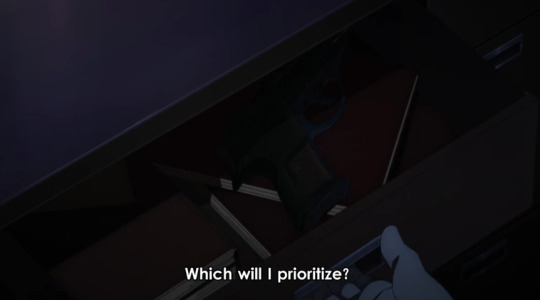
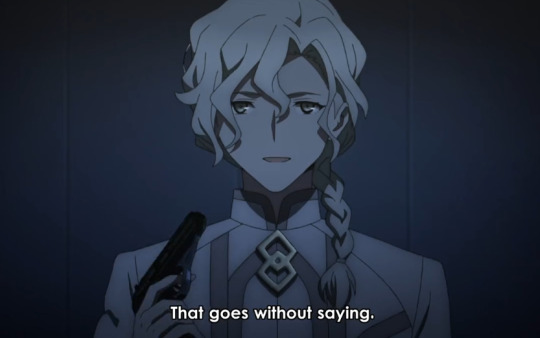
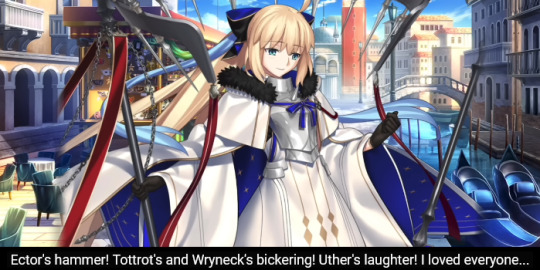
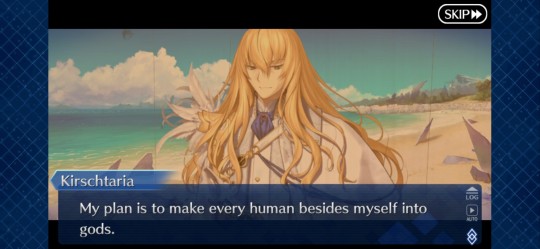
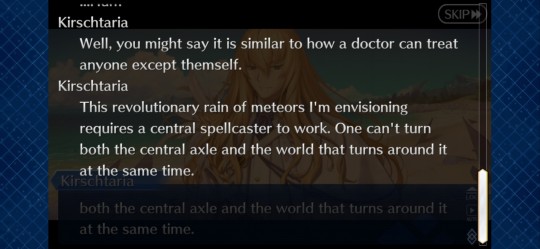
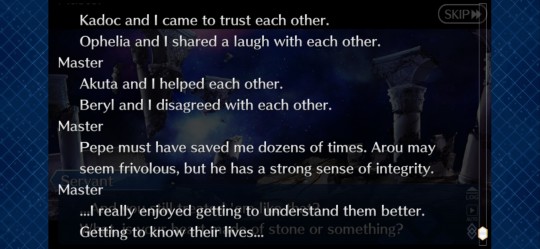

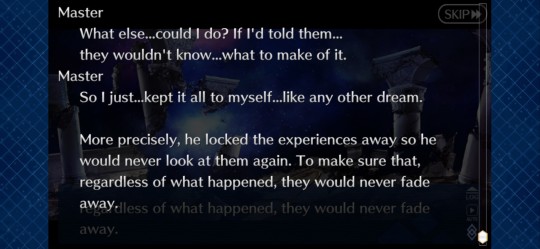
there has been a thematic thread linking marisbury's vision for humanity's future to kirschtaria's own desire to elevate humanity and protect the crypters, and morgan's own effort to protect the land of britain that contains the memories she made as aesc alongside the original tam lin and uther. this also reflects in artoria caster's existence post-avalon le fae as a simulacrum of the actual artoria caster that died in the lostbelt, preserved and embodied by artoria avalon so in some way the memory of that girl who remembered only sadness could be embraced by happiness. additionally, meltryllis in SE.RA.PH. breaching time and space to protect fujimaru is also a link in this chain. morgan's summer form, waking up after her spirit origin manifested her memories of being aesc, makes mention of the butterfly's dream: a philosophical thought musing that there is a transient boundary between dreams and reality.
the chinese philosopher chuang tzu once dreamt he was a butterfly, untethered and free to float in the air. he woke up questioning whether he dreamed he was a butterfly, or whether the butterfly was dreaming it was him. reality can feel like a dream, and a dream can feel more real than anything, underscoring how transience is an unavoidable part of the human condition. people will live their dreams and watch them end from the moment they are born to the day they die, and heroic spirits are the same because humanity lives every day chasing its dreams and heroic spirits are those dreams.
but starting with marisbury, we contend with the idea that sometimes, the dreamer does not wish for the dream to end. if dreams are transient because the dreamer must wake, then the only way to preserve the dream is if the dreamer fades away into the dream instead. marisbury seemingly committed suicide to preserve the animusphere grand order. meltryllis burned through the remnants of her existence to protect her memories of her timeline's fujimaru by saving them in their own. kirschtaria, already at death's door, stayed alive only to ensure his ideal and his friends could survive beyond his death, his soul being described as a bird taking flight with caeneus chasing in tow as he dies. morgan sacrificed being aesc so the land of britain could survive, and wiped her own memories of totorot and mash so they wouldn't be erased from existence for being time paradoxes. artoria caster used her entire life force to forge excalibur so the time she treasured could live on with her friends in chaldea as they fought to save proper human history, and themselves, from the rampage of cernunnos's corpse.
on top of all of that, there have been very cryptic visuals associating mash and butterflies since fgo's first opening. "shikisai" had the visual of a butterfly floating in ruins, and "yakudou" has a shot of mash's gaze following a butterfly flying into the sky. the butterfly is her guide, leading the way to the end of her dream. kinoko nasu himself once shared that cosmos in the lostbelt is a story about accepting that ends will come, and thus the butterfly is the lesson that she must take to heart to grow into a person who can claim what the purpose she chose is without shame or hesitation as the end draws near. this is something she did once saving fujimaru from goetia's ars almadel salomonis at the end of observer in timeless temple. and i would not be surprised if she did the same against marisbury at the end of cosmos in the lostbelt (which has yet to finish, as paper moon's trailer demonstrates having it be part of the chapter's title).
but what is the dream she is dreaming that is inevitably coming to an end that she will choose to protect at the cost of her place in it? if you've been reading this far, then the answer should be obvious.

but nasu wouldn't be much of a romantic if he believed an end is all you could really look forward to. the journey is far more important than the destination, because it's the only thing that can give the end meaning, as romani archaman rightly puts in his final conversation with mash. you can only extrapolate the significance of something after it's already over. not at the start, not in the middle of it, and not at when it's over, but at the moment that lies beyond the end of the dream.
and when a dream ends, that is the moment when another begins.
285 notes
·
View notes
Text
Rambles and insecurities
Tw: mentions of PMMD snd anxiety
Nothing gives me more onset depression than having my period. The moment where I technically have the most testosterone I can naturally make and it’s when I’m the most “feminine” in the eyes of others. It also gives me so much anxiety for when I eventually do go on T. I have PMDD and it makes me worried I’ll just become rage and anger in physical form. Not because I’ll be more masc and masc = rage, but because I think I act the worse on my period, and I don’t want to subject anyone to that level of instability.
I’m in therapy and I’m trying to settle myself internally before I can go on T. But is there even a point to waiting. The world has never waited for me to be ready.
1 note
·
View note
Note
I only got into true detective about a month ago and I'm happy to find people in the same boat; if you don't mind could you share some of the deeper thoughts you've had about the show? Your interpretations/headcanons?
Fuck yes I can, goddamn I'm so excited
First, I think the first and fourth seasons are perfect reflections of one another. If you haven't watched S4, many apologies for spoilers. I highly suggest sucking it through a straw.
I’ve been reading the book Dancing in the Flames: The Dark Goddess in the Transformation of Consciousness by Marion Woodman and Elinor Dickson
In which, the philosophical concepts of self and universal consciousness are analyzed through the framework of the divine masculine and divine feminine. I believe this plays into the themes of both Season 1 and Season 4 of True Detective.
Nic Pizzolatto has expressed that Marty and Rust were written as men he could easily see himself becoming (How I Wrote True Detective - Behind the Curtain, particularly his statement at 3:20), which in essence, is an exploration of how masculinity manifests in different contexts. These are men whose flaws render them incapable of living 'normal' lives, yet enable them to demonstrate bravery in situations where most would not.
There is a lot of gendered discourse around Season 4 that I won't get into. Ultimately, I think it does a wonderful job of presenting the flip-side of the unbalanced masculinity in Season 1 by showing us unbalanced femininity. The women centered in Night Country are imperfect; they struggle with close relationships, with demonstrating faithfulness in relationships, with maternalistic nurturing, with regard for victims, etc.
So, both seasons together really solidified my understanding of the overall story. I'll be using balance, gender, time, and death as the themes here.
There are a few lines in Dancing in the Flames that stuck out to me:
“The psyche, as a self-regulating system, yin and yang in perfect balance, is a vision that historically has yet to be realized. […] In history, as in marriage, or in the individual, when a balance becomes stagnant, one or other of the energies moves out to new adventures. The spurt forces the complimentary energy to move also, until a new balance is found. So the spiral moves.”
It's kind of funny that I picked up this book right after my second rewatch of season 4. I'm big on synchronicities, just seeing shit that plainly ain't there. But here we go,
The imagery presented in Season 1 of True Detective appears to be inspired by some iteration of Cernunnos, a Celtic God of fertility, power, & blessings/weath; "god of beasts and wild places." Further, Cernunnos is the God of the Winter Solstice; the Dark Months (re: the significance of Season 4 Executive producer Mari-Jo Winkler saying, “Let’s look at season one of ‘True Detective.’ Hot, sweaty, male. We wanted to do [the] complete opposite. Dark, Ice, Cold.” in the True Detective: Night Country Podcast).
"Cernunnos is the antlered god, part man and part stag. He is born on the darkest day of the year, winter solstice, and marries the goddess of spring, Beltane. About six months later, on summer solstice, he dies.
Among pagans, he is considered the god of fertility, animals, and wealth, and the underworld—sometimes he carries a purse filled with coin, for wealth. This connection to wealth and gold coins is found in the myth about Pluto (Hades), the god of the underworld, from which all wealth comes. Indeed abundance comes from what is deep in the earth and deep in our own psyche.
He is born on winter solstice and dies on summer solstice. This suggests his association with the rise of energy, augmentation, the increasing of light, lengthening of the day and peak experiences. He is a god associated with the potency and power of male sexuality, but not its completeness. Falling on the ground, broken, limp, is just as important an experience of the male psyche as standing erect. Also, the fact that he dies at the peak of light, the second half of the seasonal cycle brings, means that he does not hold the introspective qualities that the harvest brings and the completion of the diminishing of light.
Perhaps Cernunnos is balanced somewhat by his marriage to the goddess of Beltane. She is celebrated in a time when blessing comes from rubbing yourself with the dew of early May morning to soak in the blessing of Spring. Helen Chantler, the designer of our company, remembers watching the horned man in the forest on her BBC television growing up. It was an image that conveyed guardianship and the protector of the forest. Yet this image of the antlered man, so powerfully associated with Celtic myth and lore, has been widely depicted and enacted across indigenous cultures for thousands, or perhaps tens of thousands of years. Iconography of an antlered man, standing, have been found in French Paleolithic cave paintings" (reference).
Full disclosure, I am not learned in Celtic myth or any such topic. I don't know if this was the intended reference material for Season 1's Big Bad Spookiness, but I think thematically, this explains the unexplained in both S1 and S2.
I randomly picked up this book I hadn't yet read, which I bought at random in a used bookstore probably 5 years ago, flipped through, and landed on this picture.

Synchronicities dawg.
Woodman and Dickson have this to say:
"This is Cernunnos, Lord of the Animals. It is Shiva, or Dionysus archetypal energies long repressed by Christianity. Repression turned the Horned God into the Horned Devil, the root of all evil. [...] The Horned Devil is energy that is so repressed and cut off from the earth that it is best symbolized by Mephistopheles, the light and airy creature that floats above the earth. The Horned Devil is the disembodied spirit that manipulates, usurping situations for the gratification of its instinctual desires for domination-- sexual or otherwise. The Horned God, as Gary Lingen points out '...is a positive model for male power--free from the patriarchy and all other authoritative models--as he grows and passes through his changes during the wheel of the year, he remains in relationship to and not separate from the prime life and nurturing force--the Goddess.'
The Horned God, moreover, is an archetypal figure quite unlike most masculine images as they appear in culture. He is difficult to understand because he does not fit into any of the expected stereotypes, neither those of the "macho" male nor the reverse-images of those who deliberately seek effeminacy. He is gentle, tender and comforting, but he is also the Hunter. He is the Dying God--but his death is always in service of the life force. He is untamed sexuality--but sexuality as a deep, holy, connecting power. He is the power of feeling, and the image of what men could be if they were liberated from the constraints of patriarchal culture."
It's possible that Pizzolatto merely modeled the Big Bad Spooky Scary in Season 1 with paganistic imagery for fearmongering purposes, but I choose to believe that Childress, the Tuttles, and unnamed counterparts were worshippers of some bastardized version of Cernunnos.
It is indicated many times in both S1 and S2 that symbology associated with the murders is 'old', 'archaic', and looks like cave drawings. I believe the nature of the belief system associated with the Big Bad is transactional, given that it precedes Semitic religions.
What do you pray for when your primary goal is to live another day? You pray for abundant harvest, you pray for fertility, you pray for the sun to return.
What do you pray for when society becomes more collective? You pray for a bigger hut than the next guy, you pray for blessings.
What do you pray for when buildings scrape the sky? You pray for wealth, you pray for power.
I think the Tuttles and their counterparts belonged to a small group of worshippers who retained archaic beliefs and practices, which they attributed to the wealth or power their group amassed. Thus, they continued worshipping.
However, we only see the masculine aspects of this worship in Season 1. We see the vulnerable (women and children) victimized by physically and/or socially powerful men. We see this vulnerability overpowered through ritualistic abuses and murders, which demonstrates that the Big Bad have devolved to, or perhaps have always been, negligent of the inherent role of the divine feminine (Beltane, in this case, as the counterpart to Cernunnos). Thus, the Tuttles represent unbalanced masculinity, where they seek to overpower others in the name of worship. In reality, they are simply indulging in animalistic, individual desires. Truly, they may be neglecting and/or attempting to dominate the divine feminine out of innate fear.
"What is the way to appease the Great Mother, to keep her as Protectress and prevent her wrathful Vengeance? Give her what she demands-- blood! And likewise, invent a precise way to do it-- ritual! Thus, the first great ritual was a ritual of blood sacrifice, offered to the Great Mother-- to Mother Nature-- in a bartered attempt to quench her desire for blood. [...] Blood is indeed bodily life, and if you want to purchase life, you purchase it with blood. So goes paleologic; like magic, it works in partial truths; and like magic, since it is unable to grasp higher perspectives or wider contexts, it arrives at barbaric conclusions." - Marie-Louise Von Franz, Golden Ass of Apuleius: The Liberation of the Feminine in Man
Whatever, I won't get distracted by analyzing the psyche of side character antagonists. I won't! What I'm trying to say is:
They're worshipping an old religion, which requires blood sacrifice. This blood may be literal (murder), or symbolic (sexually abusing the innocent, i.e. symbolic blood of menstruation or deflowering).
As with all things, there is no inherent evil in worship, but this manner of worship represents a stark lack of balance. These are not praying men-- these are men attempting to manipulate nature, life/death, and femininity to their egoistic desires. Thus, they create imbalance.
This imbalance, in True Detective, is a microcosm representing greater imbalances of energy. Imbalance in society, in the universe, and in individuals. We are shown this lack of balance through complex characters.
Two characters, specifically, show us the energy required to correct universal balance; Rustin Cohle and Evangeline Siqiññaatchiaq Navarro.
I also won't get into the Messiah archetypes of these characters. I won't (I probably will).
This fucking long form analysis is going to be a bitch to read and is also a bitch to write, I'm struggling to collect my thoughts well enough to not communicate like we're playing Word Associations.
Okay. So. Rust = Divine Masculine. Evangeline = Divine Feminine. Hold onto that for later.
In the Southern states of America, such as Louisiana where the Tuttles have historical roots, power and wealth are generally understood as God’s Blessings. The Christian God. Which explains why the Tuttles used Christianity as a mask for their true beliefs and practices. Additionally, the immutable power of organized religion allowed the Tuttles and their associates access to vulnerable individuals to prey upon.
While the Tuttles practiced their underlying beliefs in secret, I believe Errol Childress’s murder of Dora Lange indicated his sentiments of rejection from his bloodline. Where the proper Tuttles secured social and financial power, Errol was essentially a grunt, despite enabling and participating in the ritualistic abuse and murder. He might have developed a coping mechanism of believing himself a profit. Frustrated that in the ‘real world’ the power and virility he exercised in private was not respected, he made a ‘show’ of Dora Lange’s murder. This could have been motivated by the following:
- A rejection of the Tuttles secretiveness. We should be proud of our practices. Look, we’re untouchable. I won’t live in the shadows
A warning or punishment of the Tuttles. By displaying his practices proudly through Dora Lange’s presentation, Errol Childress places the Tuttles at risk for exposure.
A personal demonstration of elevated dedication to his ‘god’, i.e., an attempt to prove he is more faithful than those who practice in secret. Errol was showing the world his power.
I believe the Tuttle’s practice of murdering and abusing innocents in the name of a, conceivably, pagan god, is due to a bastardized interpretation of the god’s power and purpose. If we consider that Cernunnos alone is the divine masculine, incomplete/imbalanced without the feminine counterpart, we see the space where men may lean into this lack of balance as an opportunity to enforce patriarchal dominance over the divine feminine. By abusing the divine feminine (women and children), the interpretation of Cernunnos becomes a rat-race of man’s most basic pursuits; power, wealth, and death. They lord over the divine feminine by sacrificing its counterparts (women and children) to Cernunnos. In a patriarchal interpretation (cisgender, heterosexual) of nature, men cannot create as women can, so the most they can achieve in the way of god power is taking life.
Then comes the spiral. In the first season, it appeared to be representative of the Nietzschean circular time theme. Given the events of Season 4 as a continuation of the spiral imagery, I have deduced that the S1 spiral is another perversion of old beliefs that the Tuttles have bastardized.
Rather than being a symbol of Cernunnos (real quick: peep Cernunnos vs. Carcosa?? 'He who eats time?' and absolutely chooooke on this interpretation) I believe the spiral represents his ‘wife’ or divine feminine counterpart– Spring. Or rather, Life. And thus, She is Time itself. The Tuttles pray to something that, again, EATS TIME. I'm sorry I keep saying this, but they only worship half of nature. It's a perversion. It's wrong. It's empty. S4 gives us the other half of the story.
In Season 4, the supernatural force, or ‘god’ is referred to with feminine pronouns: ‘She is awake, she is coming, she is here’. More on this later, but I think the spiral represents a larger concept than Cernunnos/Carcosa; Balance. Eternity. The Universe. I believed initially that the spiral was jagged, as opposed to the ‘perfect’ golden ratio, because it would have been carved or drawn with rudimentary objects by prehistoric humans. Looking at the galaxy in which earth exists (and others like it)-- I mean :/ I'm no science guy, but... come on now.

(cr. NASA / STScI)


(cr. Gabriel Pérez Díaz, SMM (IAC).)


(cr. Fibbonacci.com)
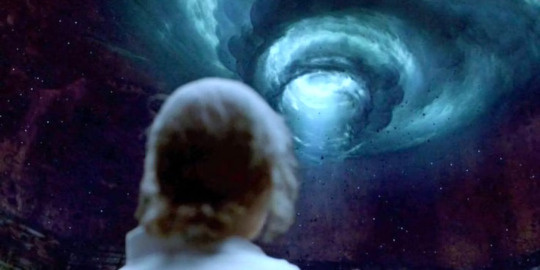
COME ON NOW.
Back to Cernunnos, he is the god of Darkness, and dies when Spring comes. However, he and his divine feminine counterpart never cease existing. They are married; opposite sides of a coin, constantly flipping; inextricably bonded. They are the same thing—and separate—and the same; flat time. (Side note: also found out the universe itself is 'flat' to our perception. I'm absolutely wrecked by this)
As Rust says, “Time created Death to grow the things it would kill.” So, from hereon, I will refer to Cernunnos’s counterpart, represented by the spiral symbol, as Time.
She is the spring, where life grows. In Season 4, we may assume that she eats in the winter. Despite the spooky Big Bad, overcoming evil, vibe of Season 4, it’s important to note that there is no inherent good or evil in the universe. There's just balance. While Navarro refers to the supernatural force as a “curse” that takes her people one by one, we must acknowledge that Death is the certainty of Life. Both states are suspended within time. Circular. Cyclical. Spinning. A spiral.
Ennis is a land of extremes, where Time and Existence appear to be a more ancient/raw form (prehistoric ice and such, significance of magnetic poles, idk I'm not a science guy).
As Time’s presence in Ennis is generally acknowledged by the indigenous people, it could stand that the descendants of those who existed on this land in prehistoric times would have a more innate connection to Time. On that land, where Time has more power, occurrences such as “the dead don’t stay dead” implicates that the laws of humanity are bent in favor of the unknowable reality of time.
Whereas the Tuttle’s represent unbalanced patriarchal masculinity, i.e., acknowledging ‘old gods’ and worshiping them for self-serving gain, demonstrated by their social powers and abuses– the Iñupiaq people exhibit instinctual balance and reverence for the old ways.
The Tuttles and counterparts mark victims with the spiral, almost as if to attract the acknowledgement of their god, whereas the Iñupiaq people mark the spiral as a warning of her presence. It is stated that ‘she’ exists where the ice is thin over the sea. To me, this indicates that ‘she’ is somewhat synonymous with the sea, or the ground beneath it, as, in the prehistoric time (where her power would be more observable) the water level would've been lower (idk, I'm not a science guy). Basically, I think ‘she is awake’ indicates that she has gone dormant/is hibernating under the ice.
Thus, Time calls the Iñupiaq to areas of thin ice in order to ‘eat’ them. This practice is representative of a balance. She is existence in perfect balance. She is life and death. In her presence, time becomes nonlinear (i.e., the visions experienced by the characters in S4). Time becomes a flat circle.
The Tuttles presence in Ennis via the mine has disrupted the circle. The softening of permafrost due to the mine's pollution has both awoken her, and disrupted the balance of her domain. Life and Death. Rather than taking her justified ‘fill’ of the dead, pollution has caused an unnatural rise in deaths, exampled by the stillbirths. The Iñupiaq stillbirths represent the inherent interruption of natural course. Thus, she is not just awoken, but angered. She's PISSED.
This explains why the events in Season 4 unfold as they do. In the last episode, an Iñupiaq auntie explains that ‘she (Time)’ was responsible for taking the Tsalal men or releasing them. She chose to take them, and ‘eat their fucking dreams’.
This statement reminded me of the theme of dreaming in Season 1. A theoretical physicist, Fred Alan Wolf, claims that “dreaming is vital to our survival as a species and a necessary ‘learning laboratory’ wherein the self and the universe evolve. In brief, matter evolves through dreams.” In the book Dancing in the Flames: The Dark Goddess in the Transformation of Divine Consciousness, “the unknowable mystery we sometimes call God” can only be understood through finding individual and communal balance, which is historically and presently impossible due to patriarchal systems.
The significance of this, I think, is the overarching theme in both seasons: Time as an insurmountable force that weighs on the characters. Past, present, future are flattened and defined by suffering. We see the mostly faceless antagonists attempt to gain unnatural power over time– in Season 1, the Tuttles (and their counterparts) actions implicate a desire of procuring power and wealth through sacrificing innocent youth (balanced time), and in Season 4, they are searching for a microorganism that could provide insight into immortality, or at least further their material wealth and power– ultimately creating the imbalance of essential, unknowable truths: Time, Life, Death, and Dreaming. We also see the protagonists struggle under the weight of Time in a more intimate, consumable capacity.
The imbalance of energies is a human fault. This human fault, likely, has no true power in the universe. It is simply a disruptor, which will ultimately be self-corrected, as “the spiral moves.”
We see this correction in the form of an unlikely savior. In Season 1, this is Rust. In season 4, this is Navarro. They are both plagued with an undefined but obviously overwhelming burden of Time, and an innate connection to the unknowable.
While neither understands how or why, they have been called to a life which seems to deny human nature. Isolation, reluctant power (being a fuckin cop), and the responsibility of bearing witness to the soul-crushing examples of human failure. However, their actions and insight are ultimately the antithesis of the antagonists perversions of Life and Death. Both Rust and Navarro, though somewhat unwillingly, are called on to correct Time.
Their circular patterns become enlightened. They prevail. They balance the divine masculine and divine feminine.
I think this is most apparent in Navarro’s character arc. Particularly her statements, and the many examples of her being ‘called’ by Time. Her displacement from the community of people who share her blood, and thus her connection to the land, is significant because it has potentially inspired her to become a protector. With the social power of law enforcement, and the dual-perspective of those who perpetuate disbalance of time (cops, who ultimately are tools for high-level antagonists like the Tuttles), and those who keep it (the indigenous people), she is the perfect blend of energies to correct the balance. I think she was beckoned back to the land by Time specifically, (evidenced by her visions, like “listen”), with divine purpose. Her Inupiaq name meaning the sun’s return from darkness in itself is evidence of that. Her compassion for Annie K. has greater implications on the story than our understanding of justice.
If she was called to the land by Time, presented with the murder of Annie K. as motivation to expose Tsalal, thus exposing the mine, and ultimately the Tuttles, Navarro restores the balance of Life and Death, and ultimately Time, to the land. Her personal journey reflects the initial disbalance, the unknowable forces at play, and ultimately the correction of both. She encompasses universal truths.
God calls from places where the ice is thin.
God is talking to Evangeline directly.
In the spiritual statements that tell Evangeline to “listen”, as well as the many visions in which an individual (conceivably possessed by spiritual forces) points at her, God orders her to bear witness, which is also the purpose that Rust Cohle assigned to his existence in Season 1.
Like Moses and the burning FUCKING bush, Evangeline is plagued with visions; and is called to carry the burden of guiding others into the light.
As Rust said in the first season, “it’s the oldest story there is. Light vs. Dark” and “if you ask me, light is winning.”
Okay, that's all I have for right now. Sorry for using this as my excuse to go apeshit in the way I've been meaning to for weeks. If you'd like specific character headcanons or anything, let me know! Rust Cohle rents an apartment in my head and it fucking stinks in there.
#hope this answers your question lol#asks#true detective#true detective season 1#true detective season 4#true detective night country#rust cohle#rustin cohle#evangeline navarro
25 notes
·
View notes
Text
A Dream About Cenarius
I recently had a dream about Cenarius.
In the dream, I was standing in a forest. Cenarius was standing in front of me. Cenarius looked down at me and said, “Part of the path of nature is respecting nature and what it has to offer.”
Now I know something about the path of nature that Cenarius–or whatever god or deity has been taking his form in my dreams (if a god or a deity has been taking his form in my dreams)–wants me to follow.
However, there are three questions that I have.
1. What exactly does "respecting nature and what it has to offer" mean, and what would it involve?
2. What are the other parts of that path of nature?
3. Is that path of nature the same path of nature that the Green Man, Cernunnos, Malorne, and Pan want me to follow?
#Dreams#Cenarius#World of Warcraft#WoW#Warcraft#Thoughts on Dreams#Nature#The Green Man#Green Man#Cernunnos#Malorne#Pan#Pan God#Greek Pan
3 notes
·
View notes
Text
15 Days of Deity: Cernunnos
[Disclaimer: Most, if not all of this is UPG]
Putting multiple days together because it fits better. Day 7-10
Offerings:
There are no historical offerings known, although with the carvings we do know it would makes sense if coins were part of the offerings.
Coins
antlers
statues of stags or wolves
bonfires
tree nuts like acorns or chestnuts
crystals such as green goldstone and moss agate
moss
whisky and clear water
red meat
forest walks
donate to forest preservation
clean the nature spaces near you
learn something new
hedge riding
Festivals and Sacred Days:
I offer to Cernunnos on the New Moons, and I dedicate Lughnasadh and Beltaine to him.
Sacred Places:
There is a place in the forest of de Peel, in Brabant, the Netherlands. There I first found a tree that had fallen over, the roots sticking up towards the sky and the dirt still attached to it looked like a hulking antlered figure from a distance. I felt Cernunnos’ presence so strongly here. Over the years I have returned to this spot to make offerings. It no longer looks like it did, but the place is still powerful.

The white spring in Glastonbury. There is an altar dedicated to him and it is a powerhouse. Amazing experience to be there and charge a pendant devoted to him.
And each year on Castlefest, a large pagan/fantasy festival held near Lughnasadh is a sacred Cernunnos space for me. They built a large wicker creature with a different theme each year, where people can leave their offerings to be burnt. It is amazing, and spiritual and I feel Cernunnos’ presence so strongly here. Even when I can’t be there in person and view it online instead.
Devotional Practices:
Read about him and deities connected to him
Dedicate the new moon
Dedicate forest walks
Donate to charity, especially those dedicated to forest preservation, or wolves
Study new magic techniques
Go on a spirit journey to visit him
Work on his temple or shrine
Write and read poetry dedicated to him
Read other people’s personal experiences and thoughts about him
Dance, especially around a bonfire
29 notes
·
View notes
Text
The Horned Serpent
So before I get started on this one, I have a couple of things to get out of the way. First, I will be using she/her pronouns for the Horned Serpent; this is just because UPG and because I'm used to it. I know someone else who venerates/worships the Horned Serpent, uses they/them pronouns for them, and considers them to be beyond gender / present as whatever gender they feel like. Second, I will be focusing on my interpretation of her on the Gundestrup Cauldron, in part because there's really not a lot of literature on her, even when you include works that specifically analyze Cernunnos' depictions. Third (and related), I will be using the National Museum of Denmark's estimate as to when/where the Gundestrup Cauldron was made, which is roughly in the Danubian or Wallachian Plain(s) around 150 BCE to 1 CE (link).
So first a little historical & cultural context. This area, as far as culture groups, would have been a heck of a melting pot, between the Dacians and Thracians that already lived there, the Scythians coming in and also living near by, the Gauls that moved in around the 300s-200s, the Greeks who came up and started establishing colonies along the Black Sea in the 300s, and the Romans, encroaching on everyone's business around the time the Cauldron was built. A pretty solid primer on the history of the region is A Companion to Ancient Thrace, published by Wiley Blackwell.
So I'm gonna try to make sense but it might be a little disorganized going forward. Anyway, onto the actual thoughts & stuff. So anyone who's taken even a passing glance at Cernunnos is well aware of the Horned Serpent, since she is present in basically every ancient art you can find with him. On the Gundestrup Cauldron, she appears three times, all on the interior panels. One is at the Hero's heel, who's holding the wheel; a second is at the end of a line of heroic riders, which seems to be a Thracian horseman motif; and of course the famous Cernunnos panel. In Thracian Tales of the Gundestrup Cauldron, published by Najade Press, Jan Best presents an interpretation of the interior panels as a story, and assumes that Cernunnos is singing in his famous panel, specifically about the secrets of immortality, a concept which was very popular at the time. I agree with this and I also assume that the depiction of Taranis / the wheel god is that he is also singing, and if he is singing then the lions and griffins - both predators associated with kingship (griffins were protectors of the pharaoh, and also decorated certain tombs out in ancient Persia), then the action of passing off the Wheel must have symbolic meaning, such as being handed the Wheel of Heaven.
The Gundestrup Cauldron's exterior also has very clear influence from the Scythians, you can almost 1:1 map the gods based on Herodotus's retelling of the Pontic stories. I believe there are also thematic parallels going on here on the Wheel God panel, featuring a new god/king being given the symbol of his domain. Wikipedia actually has some relatively thorough articles on Scythian religion as well as the genealogical myth specifically, which is the myth that I personally associate with the wheel-giving panel. As well, the animals in this panel don't appear to be particularly concerned with attacking anyone - if anything, the griffins and lionesses are slightly tilted from one to the next, which makes me think it's more likely that they are dancing, especially if the human/divine subjects are singing, especially if the human with the helmet is receiving a high honor, potentially his rank amongst the gods. In this panel, she is just at the hero's feet, not really joining the parade if the animals, but clearly not ready to attack either, but her attention does seem to be drawn towards the hero.
The final panel she is on is the panel featuring the nine soldiers and the heroized dead, represented by the "Thracian horseman" motif. After Alexander the Great and his penchant for having statues of himself be on horseback, it became popular for wealthy men and nobles to depict themselves riding horseback to a goddess or sacred tree (unfortunately my best source discussing this in English is also not great and he comes up with some..... questionable theories), but the popularity seems to have blown up to the point where even deities such as Zeus were depicted on horseback in a similar manner. There are also mentions in a few other sources that the Thracians believed in the ability for people to essentially become immortal after death. Unfortunately, I'm having trouble sorting out my notes and this essay has been nagging me for weeks now.
Anyway, I interpret this panel as what is expected to happen to us after we die - the "ordinary", so to speak, are lead to a deity, likely to be reincarnated (this is honestly just a guess on my part largely due to the popularity of that in Greece for ever, and Grecian influence was in full swing by the time the Cauldron was made), meanwhile the "extraordinary" are lead by the Horned Serpent.
This is where I tie all three together to my upg/theology: The Horned Serpent is a friend and ally to Cernunnos. He teaches the secrets of life after death to those who will listen. The Horned Serpent is by his side during his teaching, and when we die, if we have proven ourselves worthy during life, she guides us through the trials of the afterlife. If we succeed in these trials, we are awarded with apotheosis - becoming a god or godlike - and she stands by our side as we earn this prize.


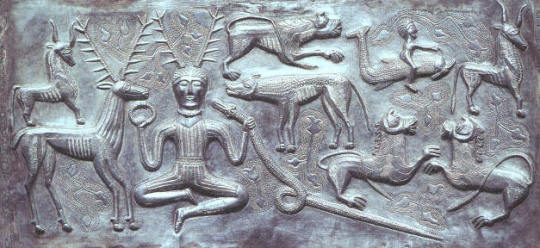
@musingmelsuinesmelancholy sorry it took me so long x.x & I hope this makes sense!
#cernunnos#thracian polytheism#gaulish polytheism#dacian polytheism#scythian polytheism#the horned serpent#balkan paganism#celtic paganism#paganism
19 notes
·
View notes
Text
Fern's introduction to: Nehalennia
Nehalennia is a Goddess associated with sea-trade, prosperity, the harvest, and the North Sea. She is also a psychopomp. She was revered in Zeeland in the Netherlands, near the Rhine in Germany, and in England. We are not sure if Nehalennia was Germanic, Celtic, or Roman. The name points towards Roman, but she was likely a local Goddess that was given a Romanized name.
We know Nehalennia due to altar stones that have been found near Colijnsplaat, Zeeland. Symbols often found on the stones are dogs (symbols of the underworld), baskets of apples, pears, and bread (harvest and prosperity), a ship's wheel or ship's bow, a shell shaped ceiling, and a distinct short cape that Nehalennia wears on all her stones. She is also often depicted in the same style as the Germanic Matronae, or Mothers, and in some stones from Trier in the same triad as the Matronae. For this reason she is also thought of as a Mothergoddess.
The stones were dedicated by seafaring tradespeople as payment for a safe passage, often to England. They sold fish sauce, salt, and wine. The first set of stones were discovered in 1645 when a hug storm eroded part of the coast. There were no museums or historical societies back then, so the stones were displayed in a church. Tucked into the back, they were underneath a leaky roof and covered in moss. A few years later, the church was struck by lightning and burned down, and the stones were lost. Luckily sketches and drawings of the stones were still preserved.
Then, on the 14th of March in 1970 a fisherman found a strange stone in his fishing nets. Instead of throwing it back, he called the historical society in Leyden, and started fishing for more stones. Together over the course of a few months they found over 150 votive stones and fragments, all dedicated to Nehalennia. This is when she emerged again from both the see and from obscurity, and why I celebrate Nehalennia Resurfacing on this date.
Fragments found of the temple itself indicate that there were probably fresh water wells, where the boats could get the drinking water they needed for their journey over the North Sea. A replica of the temple (smaller and without wells) is open to the public on Colijnsplaat.
As stated Nehalennia is a Goddess of trade over sea, of the harvest and prosperity, and she is a psychopomp, bringing the souls of the departed to the Otherworld.
Because of her realm of sea travel I associate with her: lighthouses, storms, the stars (navigation), shells, grey pearls and moonstone, sailing and boating, protection, selkies, merfolk, knotmagic, sea magic.
Because of her realm of harvest I associate with her: apples, baskets and cornucopias, wheat and grain, bread, nature, fields, growth, prosperity both physical and spiritual, bonfires, harvest festivals, fertility.
Because of her role as a psychopomp I associate with her: dogs, the cycle of death and life (see also, harvest), a safe voyage to a land over the sea (for example, Avalon), traveling through the realms, protection.
I see Nehalennia as the Wildmother, (a name I had for her before Critical Role). She is the Goddess of land and sea, of abundance and life. She is a warm and loving parent that protects, but does let you figure things out for yourself. She is a deep tie to my land and the people who have lived here before. Hail the Lady of the North Sea, Nehalennia Hail!
My devotional blogs: Nehalennia, Baduhenna, Cernunnos, Elen of the Ways, the rest of my personal pantheon. Find me on my main, my witchblog, my website, and my pinterest.
#Posting this updated version on Nehalennia Resurfacing#nehalennia#dutch pagan#germanic pagan#pagan#paganblr#paganism#goddess#dutch#germanic#roman#celtic#sea witch#sea goddess
14 notes
·
View notes